Christoph Linse
The Resurrection of the ReLU
May 28, 2025Abstract:Modeling sophisticated activation functions within deep learning architectures has evolved into a distinct research direction. Functions such as GELU, SELU, and SiLU offer smooth gradients and improved convergence properties, making them popular choices in state-of-the-art models. Despite this trend, the classical ReLU remains appealing due to its simplicity, inherent sparsity, and other advantageous topological characteristics. However, ReLU units are prone to becoming irreversibly inactive - a phenomenon known as the dying ReLU problem - which limits their overall effectiveness. In this work, we introduce surrogate gradient learning for ReLU (SUGAR) as a novel, plug-and-play regularizer for deep architectures. SUGAR preserves the standard ReLU function during the forward pass but replaces its derivative in the backward pass with a smooth surrogate that avoids zeroing out gradients. We demonstrate that SUGAR, when paired with a well-chosen surrogate function, substantially enhances generalization performance over convolutional network architectures such as VGG-16 and ResNet-18, providing sparser activations while effectively resurrecting dead ReLUs. Moreover, we show that even in modern architectures like Conv2NeXt and Swin Transformer - which typically employ GELU - substituting these with SUGAR yields competitive and even slightly superior performance. These findings challenge the prevailing notion that advanced activation functions are necessary for optimal performance. Instead, they suggest that the conventional ReLU, particularly with appropriate gradient handling, can serve as a strong, versatile revived classic across a broad range of deep learning vision models.
Convolutional Neural Networks Do Work with Pre-Defined Filters
Nov 27, 2024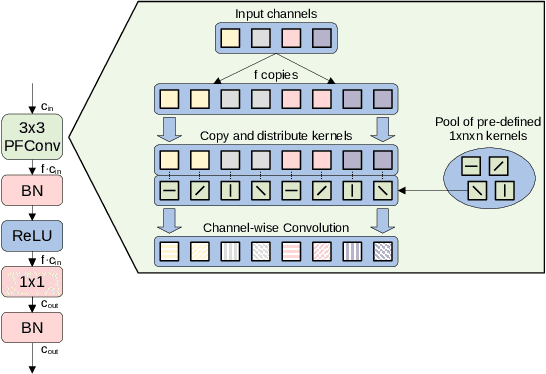
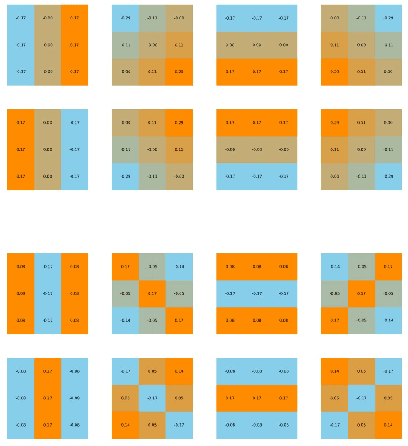
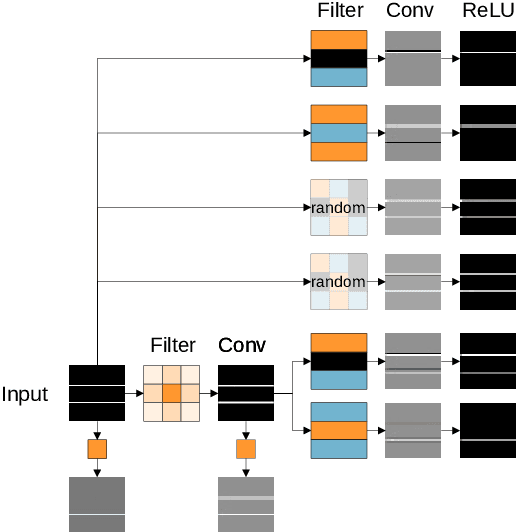
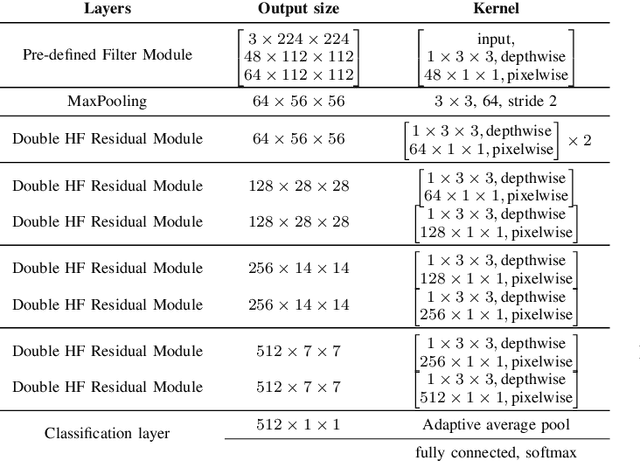
Abstract:We present a novel class of Convolutional Neural Networks called Pre-defined Filter Convolutional Neural Networks (PFCNNs), where all nxn convolution kernels with n>1 are pre-defined and constant during training. It involves a special form of depthwise convolution operation called a Pre-defined Filter Module (PFM). In the channel-wise convolution part, the 1xnxn kernels are drawn from a fixed pool of only a few (16) different pre-defined kernels. In the 1x1 convolution part linear combinations of the pre-defined filter outputs are learned. Despite this harsh restriction, complex and discriminative features are learned. These findings provide a novel perspective on the way how information is processed within deep CNNs. We discuss various properties of PFCNNs and prove their effectiveness using the popular datasets Caltech101, CIFAR10, CUB-200-2011, FGVC-Aircraft, Flowers102, and Stanford Cars. Our implementation of PFCNNs is provided on Github https://github.com/Criscraft/PredefinedFilterNetworks
Rethinking generalization of classifiers in separable classes scenarios and over-parameterized regimes
Oct 22, 2024
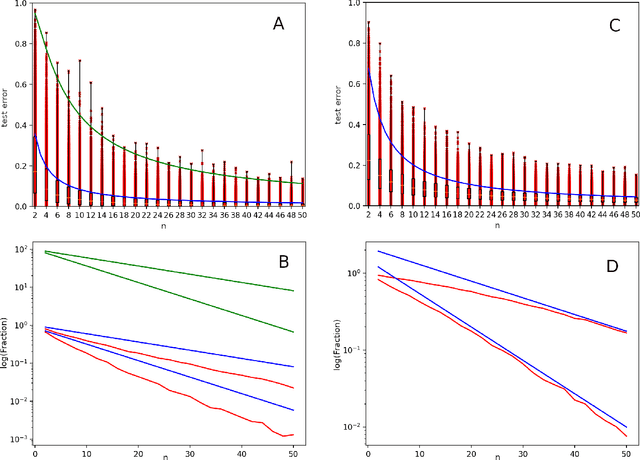
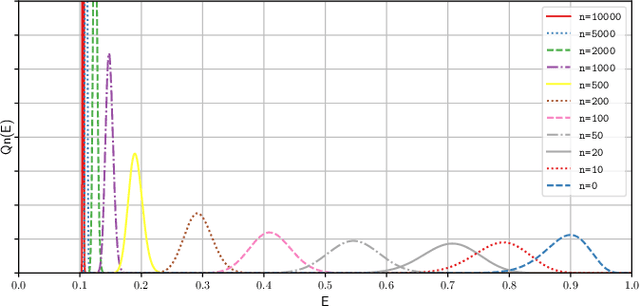
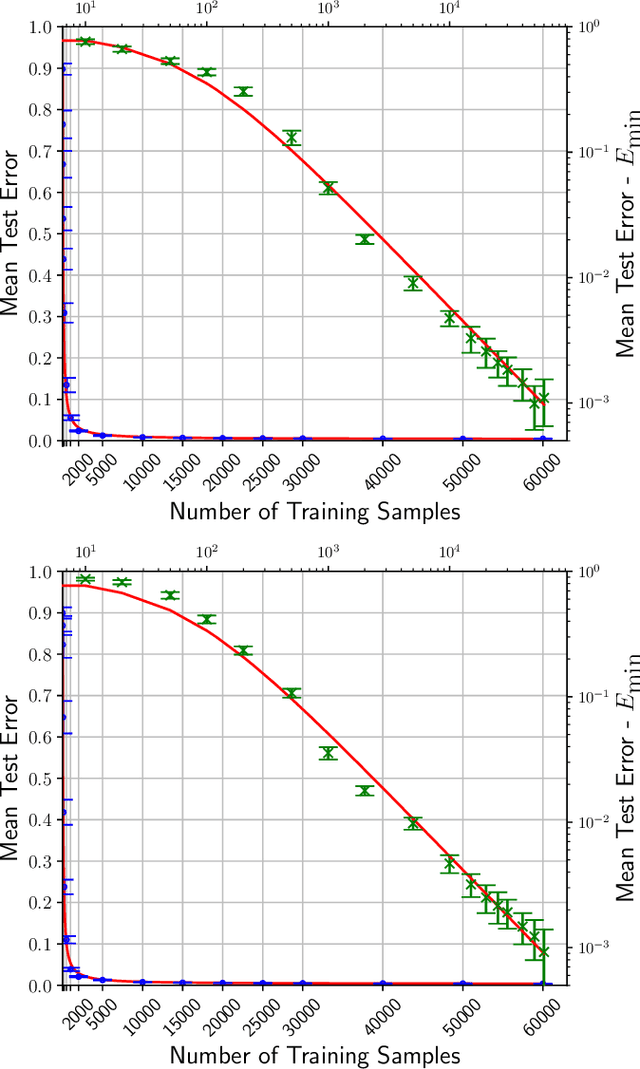
Abstract:We investigate the learning dynamics of classifiers in scenarios where classes are separable or classifiers are over-parameterized. In both cases, Empirical Risk Minimization (ERM) results in zero training error. However, there are many global minima with a training error of zero, some of which generalize well and some of which do not. We show that in separable classes scenarios the proportion of "bad" global minima diminishes exponentially with the number of training data n. Our analysis provides bounds and learning curves dependent solely on the density distribution of the true error for the given classifier function set, irrespective of the set's size or complexity (e.g., number of parameters). This observation may shed light on the unexpectedly good generalization of over-parameterized Neural Networks. For the over-parameterized scenario, we propose a model for the density distribution of the true error, yielding learning curves that align with experiments on MNIST and CIFAR-10.
Enhancing Generalization in Convolutional Neural Networks through Regularization with Edge and Line Features
Oct 22, 2024Abstract:This paper proposes a novel regularization approach to bias Convolutional Neural Networks (CNNs) toward utilizing edge and line features in their hidden layers. Rather than learning arbitrary kernels, we constrain the convolution layers to edge and line detection kernels. This intentional bias regularizes the models, improving generalization performance, especially on small datasets. As a result, test accuracies improve by margins of 5-11 percentage points across four challenging fine-grained classification datasets with limited training data and an identical number of trainable parameters. Instead of traditional convolutional layers, we use Pre-defined Filter Modules, which convolve input data using a fixed set of 3x3 pre-defined edge and line filters. A subsequent ReLU erases information that did not trigger any positive response. Next, a 1x1 convolutional layer generates linear combinations. Notably, the pre-defined filters are a fixed component of the architecture, remaining unchanged during the training phase. Our findings reveal that the number of dimensions spanned by the set of pre-defined filters has a low impact on recognition performance. However, the size of the set of filters matters, with nine or more filters providing optimal results.
Leaky ReLUs That Differ in Forward and Backward Pass Facilitate Activation Maximization in Deep Neural Networks
Oct 22, 2024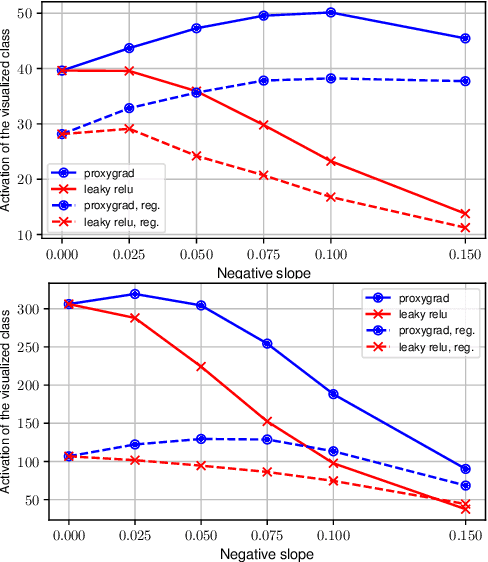
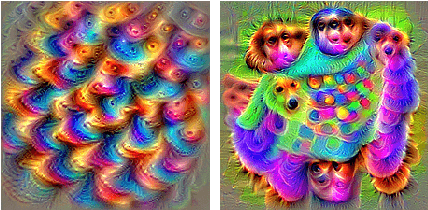
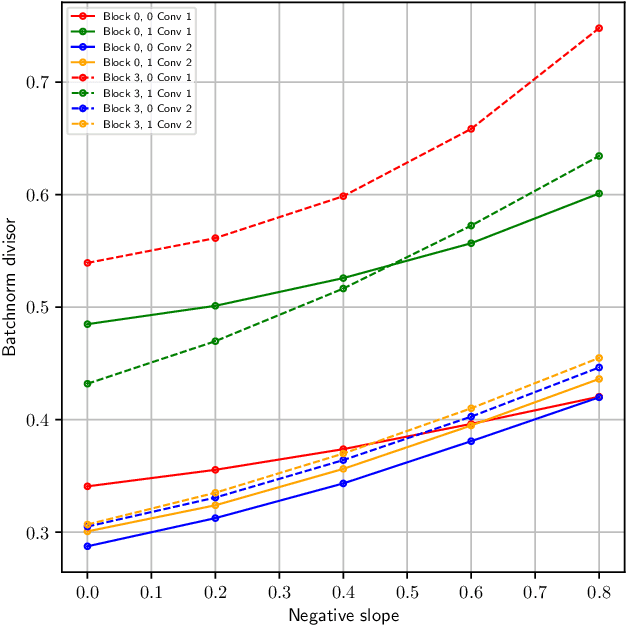
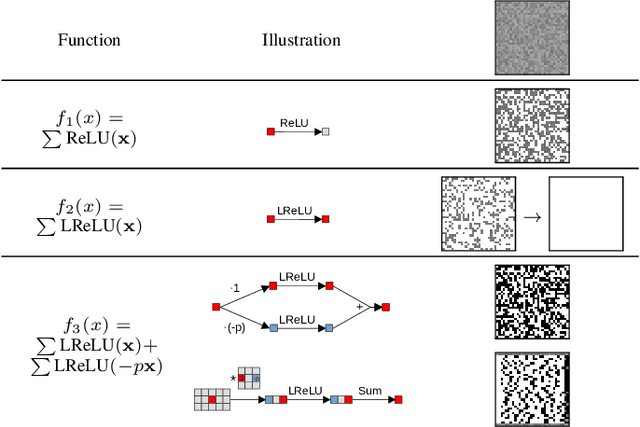
Abstract:Activation maximization (AM) strives to generate optimal input stimuli, revealing features that trigger high responses in trained deep neural networks. AM is an important method of explainable AI. We demonstrate that AM fails to produce optimal input stimuli for simple functions containing ReLUs or Leaky ReLUs, casting doubt on the practical usefulness of AM and the visual interpretation of the generated images. This paper proposes a solution based on using Leaky ReLUs with a high negative slope in the backward pass while keeping the original, usually zero, slope in the forward pass. The approach significantly increases the maxima found by AM. The resulting ProxyGrad algorithm implements a novel optimization technique for neural networks that employs a secondary network as a proxy for gradient computation. This proxy network is designed to have a simpler loss landscape with fewer local maxima than the original network. Our chosen proxy network is an identical copy of the original network, including its weights, with distinct negative slopes in the Leaky ReLUs. Moreover, we show that ProxyGrad can be used to train the weights of Convolutional Neural Networks for classification such that, on some of the tested benchmarks, they outperform traditional networks.
Large Neural Networks Learning from Scratch with Very Few Data and without Regularization
May 18, 2022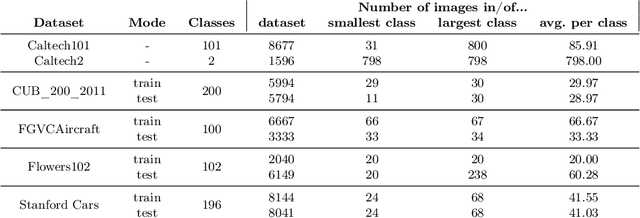
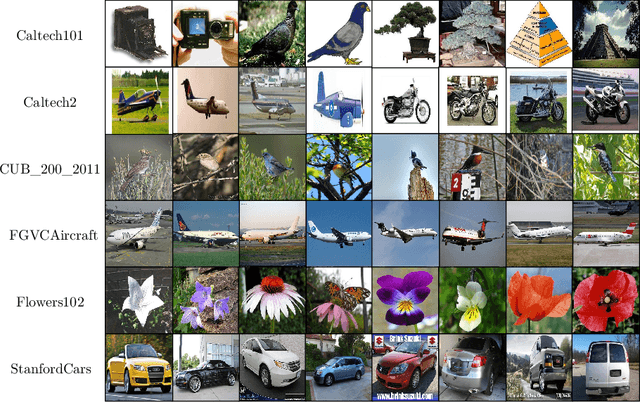

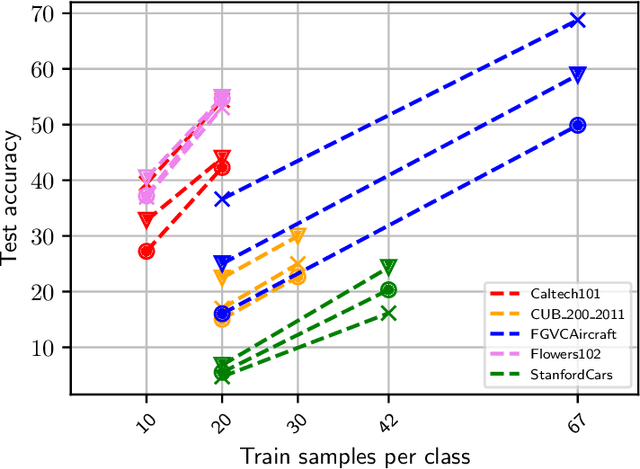
Abstract:Recent findings have shown that Neural Networks generalize also in over-parametrized regimes with zero training error. This is surprising, since it is completely against traditional machine learning wisdom. In our empirical study we fortify these findings in the domain of fine-grained image classification. We show that very large Convolutional Neural Networks with millions of weights do learn with only a handful of training samples and without image augmentation, explicit regularization or pretraining. We train the architectures ResNet018, ResNet101 and VGG19 on subsets of the difficult benchmark datasets Caltech101, CUB_200_2011, FGVCAircraft, Flowers102 and StanfordCars with 100 classes and more, perform a comprehensive comparative study and draw implications for the practical application of CNNs. Finally, we show that VGG19 with 140 million weights learns to distinguish airplanes and motorbikes up to 95% accuracy with only 20 samples per class.
Explainable COVID-19 Detection Using Chest CT Scans and Deep Learning
Nov 09, 2020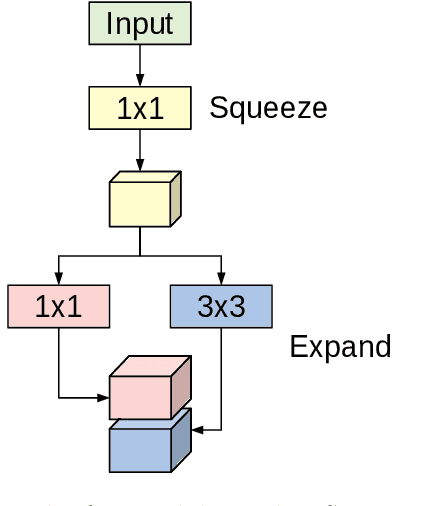

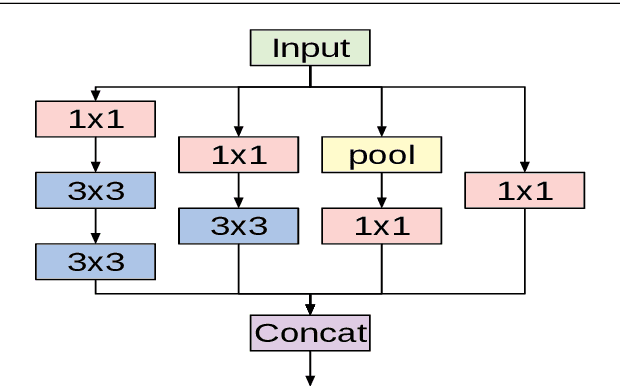
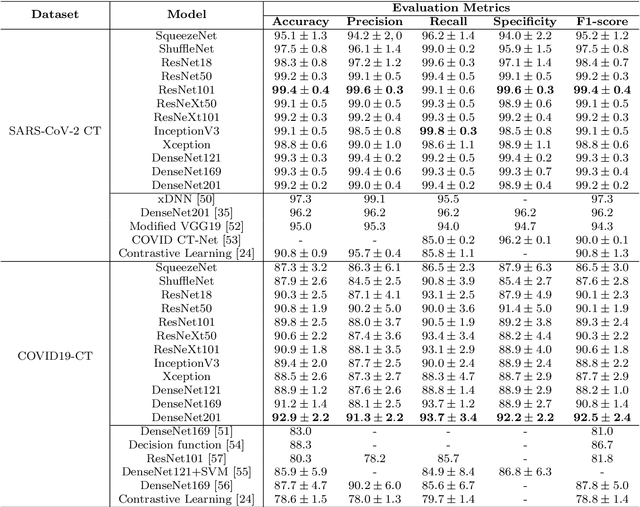
Abstract:This paper explores how well deep learning models trained on chest CT images can diagnose COVID-19 infected people in a fast and automated process. To this end, we adopt advanced deep network architectures and propose a transfer learning strategy using custom-sized input tailored for each deep architecture to achieve the best performance. We conduct extensive sets of experiments on two CT image datasets, namely the SARS-CoV-2 CT-scan and the COVID19-CT. The obtained results show superior performances for our models compared with previous studies, where our best models achieve average accuracy, precision, sensitivity, specificity and F1 score of 99.4%, 99.6%, 99.8%, 99.6% and 99.4% on the SARS-CoV-2 dataset; and 92.9%, 91.3%, 93.7%, 92.2% and 92.5% on the COVID19-CT dataset, respectively. Furthermore, we apply two visualization techniques to provide visual explanations for the models' predictions. The visualizations show well-separated clusters for CT images of COVID-19 from other lung diseases, and accurate localizations of the COVID-19 associated regions.
 Add to Chrome
Add to Chrome Add to Firefox
Add to Firefox Add to Edge
Add to Edge